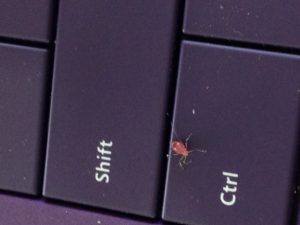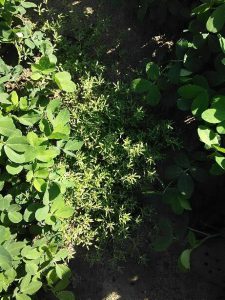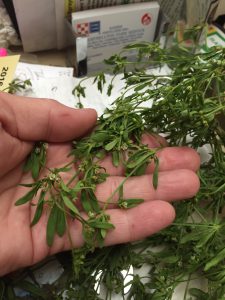Homeowners and businesses will often send in plant and insect pictures to the Extension Office. This is a convenient practice for both clientele and Extension Agents, but sometimes it may make diagnosis more difficult and more time-consuming. More often though, a fresh or living specimen is necessary for proper identification.
In an age when high quality pictures can be taken and viewed within milliseconds, plant, disease and insect ID can still take time. Often it is due to the fact we simply don’t know the answer right away and research is required. Sometimes poor picture quality and scale can make the diagnostic process more difficult. To improve identification turnaround time follow these basic steps:
- When it comes to taking pictures for diagnostic purposes, more is better. The more pictures depicting angles and magnifications received for a sample the better. If you want a plant identified, take a picture of the entire plant including flowers, leaves, and roots. Take pictures of various stages of spots on leaves, stems, and fruits if you suspect a disease or nutritional disorder. Take pictures from multiple angles and of various body parts for insect identification.
- Place an item in the frame of the picture to give a good idea of the size of the specimen through the concept of scale. You could use a ruler, a coin, or even a ballpoint pen. Objects such as coins work well for tiny insects when the measurements on a ruler may be too hard to see in the photo. You can even place the insect on the coin.
- Pay attention to focus on the subject. This is especially true when taking closeup photos and photos of small things with a cell phone camera. Cell phone cameras tend to focus on the background instead of the foreground. Sometimes the quickest solution is to place your hand behind the subject to change the automatic focus and then either leave it in the picture for scale or remove it and snap the picture quickly. It is also important to have a contrasting background such as placing a white or black paper or plastic card behind the subject.
Although it is quicker and easier to email or text plant and insect pictures, the most accurate identification can be accomplished with a fresh sample. Whether you are bringing a sample into your local Extension Office or one of the diagnostic clinics located throughout the state, it is important to follow the guidelines detailed in this publication http://edis.ifas.ufl.edu/sr007.
Extra Credit – If you want to improve you ability to take magnified photos, you may want to build the device featured in the following video “Turn Your Smartphone Into a Digital Microscope”.
- Is a Limequat a Lime or a Kumquat? - December 26, 2025
- Gardening in the Panhandle LIVE! Program Summary: Pests of Florida Lawns and Landscape Plants - May 28, 2025
- Fun Facts About Ferns - April 30, 2025



